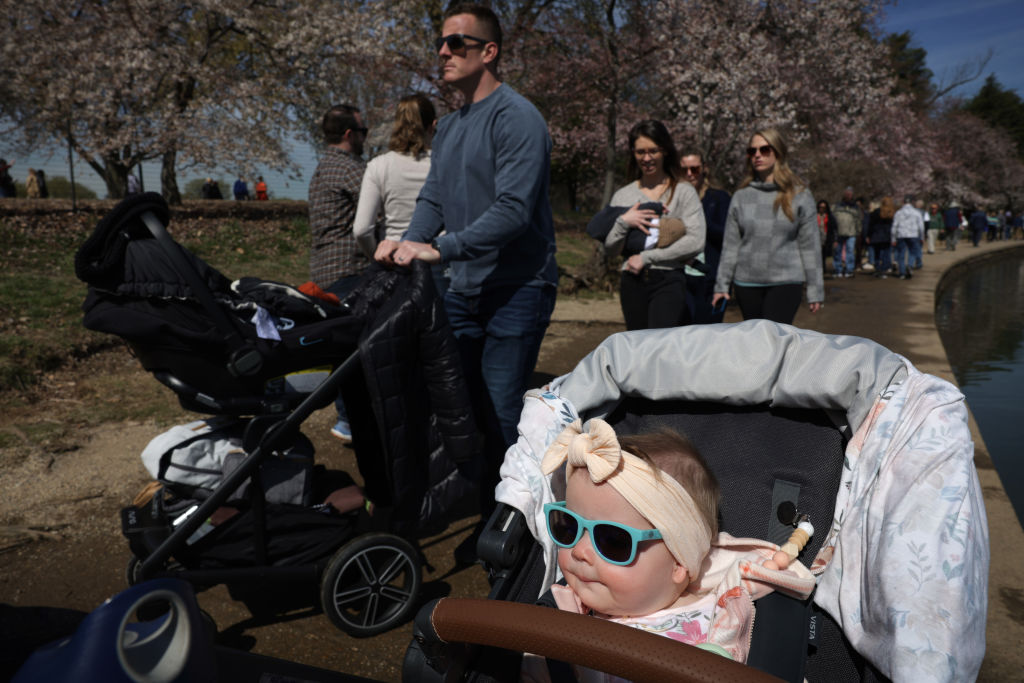
U.S. births declined in 2023 to their lowest level in more than 40 years, continuing a two-decade trend of Americans having fewer children.
Total births for the year fell 2% to 3.59 million, according to preliminary data released Thursday from the U.S. National Center for Health Statistics, a level not seen since 1979, when about 3.4 million U.S. babies were born. The rate of U.S. women of child-bearing age having babies is the lowest since the center began compiling statistics, said Brady Hamilton, an NCHS demographer and lead author of the report.
Birth rates in countries around the world have been declining, mainly in wealthier nations, as economic instability and uncertainty over events like the pandemic discourage people from having children. While countries including France and China have taken measures to try to encourage couples to have children, U.S. birth rates have been stifled by forces like lack of paid family leave and skyrocketing health costs.
Read More: Why Women in Asia Are Having Fewer Babies
Young U.S. adults are making conscious decisions about family planning and want to wait for when they can financially support themselves and the child, said Karen Guzzo, a demographer and the director for the Carolina Population Center at the University of North Carolina at Chapel Hill. Her research shows that Americans cite economic strains, work instability, political polarization, student loans, access to health care, climate change and global conflicts as reasons to delay or not have children.
“People are deliberately parenting,” she said in an interview.
The report from the NCHS, a unit of the Centers for Disease Control and Prevention, is based on birth certificates to show a snapshot of U.S. population trends. It doesn’t look at the factors behind decision-making, like the cost of childcare, Hamilton said.
The U.S. saw a slight uptick in birth rates before the 2008 credit crunch, but they’ve declined overall by 11% since 2000. While the economy has improved since the Great Recession, individual financial strains—like student debt—have increased for young people, Guzzo said. The unstable working hours and lack of paid leave from gig economy jobs such as ride-sharing also decrease control over family planning, she said.
Read More: How the Pandemic Affected U.S. Birth Rates—and What Comes Next
The data indicate that unplanned pregnancies have also fallen, the authors said. Teen birth rates fell by 2% from the year earlier, capping a 68% decline from 2007 levels. The birth rate for women ages 20-24 declined by nearly half since 2007, reaching a record low of 55.4 births per 1,000 women.
Peak birth rates have shifted to women in their 30s and 40s, but those rates declined in 2023 from the year earlier. Hispanic women were the rare group that saw more birth, with a 1% gain.
The total birth rate has remained below the level of replacement since 2007, meaning the U.S. depends on immigration to sustain current population levels. The NCHS will finalize birth data this summer.
Comprehensive policy change might help flip the downturn by contributing to financial stability and helping families raise their standard of living, Guzzo said.
More Must-Reads from TIME
- How Donald Trump Won
- The Best Inventions of 2024
- Why Sleep Is the Key to Living Longer
- Robert Zemeckis Just Wants to Move You
- How to Break 8 Toxic Communication Habits
- Nicola Coughlan Bet on Herself—And Won
- Why Vinegar Is So Good for You
- Meet TIME's Newest Class of Next Generation Leaders
Contact us at letters@time.com